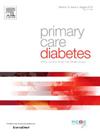比较移民和非移民在边缘化维度内的糖尿病护理质量:一项基于人群的队列研究。
IF 2.6
4区 医学
Q3 ENDOCRINOLOGY & METABOLISM
引用次数: 0
摘要
目的:西方国家的移民患糖尿病的风险增加,并且得到的糖尿病护理质量较低。然而,在比较在健康的社会决定因素方面边缘化程度相似的移民和非移民时,尚不确定这种护理方面的差距是否仍然存在。方法:利用与移民和社区人口普查数据相关的基于人口的医疗保健管理数据,我们于2019年4月1日对加拿大安大略省所有年龄≥ 40岁的糖尿病患者进行了回顾性队列研究。过程测量(HbA1c、ldl -胆固醇、尿白蛋白-肌酐比值检测;眼睛考试;确定了今后一年的适当处方和结果措施(实现指南建议的实验室检测目标)。他们在移民和非移民之间进行了总体比较,并在物质剥夺、居住不稳定和依赖这三种边缘化措施的最高和最低五分之一范围内进行了比较。结果:共纳入14449589例糖尿病患者(22.6% %为移民)。与非移民相比,移民达到许多过程质量指标的可能性更小,同时达到HbA1c和ldl -胆固醇目标的可能性更小。在物质匮乏、居住不稳定和依赖的最高和最低五分位数中,这些发现是相似的。结论:即使在相似的边缘化水平下,移民也比非移民更不可能达到糖尿病护理的许多质量指标。这一发现表明,移民和非移民之间保健质量的差距不仅仅是由于这些健康社会决定因素的差异,并突出了移民和边缘化的交叉影响。然而,这些差异相对较小,因此更大的问题是所有糖尿病患者对这些质量指标的总体满意度较低。本文章由计算机程序翻译,如有差异,请以英文原文为准。
Comparing quality of diabetes care between immigrants and non-immigrants within dimensions of marginalization: A population-based cohort study
Aims
Immigrants in western countries face an increased risk of developing diabetes and have been shown to receive lower quality of diabetes care. However, it is uncertain whether this disparity in care persists when comparing immigrants and non-immigrants with similar levels of marginalization with respect to the social determinants of health.
Methods
Using population-based healthcare administrative data linked to immigration and neighbourhood census data, we conducted a retrospective cohort study of all people aged ≥ 40 years with diabetes in Ontario, Canada on 1 April 2019. Process measures (testing for HbA1c, LDL-cholesterol and urine albumin-creatinine ratio; eye examinations; and appropriate prescriptions) and outcome measures (achieving guideline-recommended targets for laboratory tests) over the following year were ascertained. They were compared between immigrants and non-immigrants overall and within the highest and lowest quintiles of three measures of marginalization: material deprivation, residential instability and dependency.
Results
There were 1,449,589 people with diabetes included in the study (22.6 % immigrants). Immigrants were less likely than non-immigrants to achieve many of the process quality indicators and were less likely to achieve both HbA1c and LDL-cholesterol targets. These findings were similar when stratified within the highest and lowest quintiles of material deprivation, residential instability and dependency.
Conclusions
Even within similar levels of marginalization, immigrants were less likely to achieve many quality indicators for diabetes care than non-immigrants. This finding suggests that the gap in quality of care between immigrants and non-immigrants is not simply due to differences in these social determinants of health, and highlights the intersecting impact of immigration and marginalization. However, the disparities were relatively small, so the greater issue is the overall low achievement of these quality indicators among all people with diabetes.
求助全文
通过发布文献求助,成功后即可免费获取论文全文。
去求助
来源期刊

Primary Care Diabetes
ENDOCRINOLOGY & METABOLISM-PRIMARY HEALTH CARE
CiteScore
5.00
自引率
3.40%
发文量
134
审稿时长
47 days
期刊介绍:
The journal publishes original research articles and high quality reviews in the fields of clinical care, diabetes education, nutrition, health services, psychosocial research and epidemiology and other areas as far as is relevant for diabetology in a primary-care setting. The purpose of the journal is to encourage interdisciplinary research and discussion between all those who are involved in primary diabetes care on an international level. The Journal also publishes news and articles concerning the policies and activities of Primary Care Diabetes Europe and reflects the society''s aim of improving the care for people with diabetes mellitus within the primary-care setting.
 求助内容:
求助内容: 应助结果提醒方式:
应助结果提醒方式:


